Ragweed Allergy: Types, Causes, Symptoms, Diagnosis, and Treatments

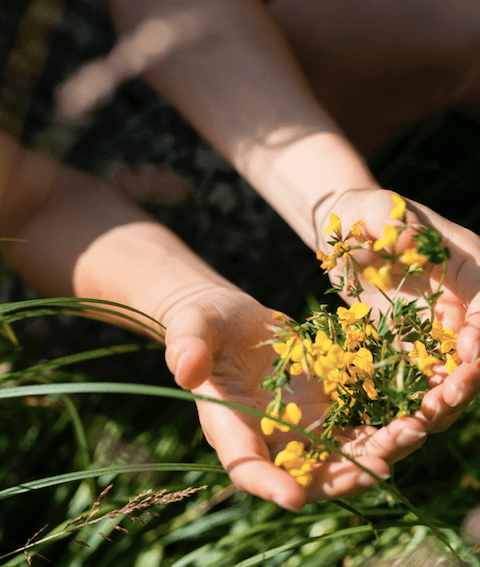
Related products
Ragweed Allergy Overview
Nature transforms with the changing seasons. Fall foliage brings vibrant colours, and the air turns crisp and cool—an eagerly awaited time for many. However, an unwelcome visitor also arrives for millions: ragweed pollen. Ragweed allergy, a common yet often underestimated condition, brings discomfort and frustration to this otherwise enjoyable season.
Late summer and early autumn mark the height of ragweed pollen season. As cooler temperatures settle in and trees begin to turn, ragweed becomes the dominant allergen. Despite its unassuming appearance, ragweed produces large amounts of pollen that trigger allergic responses in sensitive individuals. Managing these symptoms early is key to staying comfortable.
For those looking to take control of seasonal allergies, a wide variety of options are available through Welzo’s allergy medication and hayfever range, offering solutions from antihistamines to nasal sprays. Individuals experiencing itchy, irritated eyes—a common symptom of ragweed allergy—may find relief with targeted products from the allergy eye drops collection, specifically designed to ease inflammation and discomfort.
In addition, keeping allergy wipes and tissues on hand can be a practical way to manage symptoms while on the move, especially during peak pollen days. These help gently remove allergens from the face and skin, preventing further irritation.
Understanding ragweed allergy—including its causes, symptoms, and available treatments—is essential for both sufferers and caregivers. With proper care and access to effective products, the disruptive impact of ragweed can be reduced, allowing you to enjoy the seasonal changes without the symptoms that often come with them.
What is Ragweed Allergy?
Ragweed allergy, also called hay fever or allergic rhinitis, occurs when the immune system perceives ragweed pollen as a threat and responds defensively. This common flowering plant releases abundant pollen in late summer and early autumn in North America. This pollen carries proteins that trigger allergic symptoms in sensitive individuals when inhaled or in contact.
Ragweed allergy, scientifically termed allergic rhinitis or seasonal allergic rhinitis, is an immune system response triggered by exposure to ragweed pollen. Ragweed, a widespread flowering plant, is particularly abundant in North America, making it a significant source of allergenic pollen. This allergy mainly affects individuals in late summer and early fall when ragweed plants release pollen into the air. The immune system's hypersensitivity to ragweed pollen proteins leads to various bothersome symptoms.
Ragweed allergy falls under allergic rhinitis, involving inflamed nasal passages and mucous membranes due to allergens. Ragweed pollen, from common ragweed (Ambrosia artemisiifolia) and giant ragweed (Ambrosia trifida), is the primary cause. These pollen grains are small and light, designed to spread easily by the wind, making them a widespread allergen.
Ragweed is a common and versatile weed, thriving in diverse settings like roadsides, fields, and cities. A single ragweed plant releases up to one billion pollen grains in its blooming season, usually from August to October in North America. This abundance of ragweed and its extensive pollen production greatly contributes to seasonal allergies. The American College of Allergy, Asthma, and Immunology reports that approximately 23 million Americans experience ragweed allergies.
The immune system's role is to defend the body against harmful invaders. But in people with ragweed allergy, they mistakenly see ragweed pollen as a threat. This results in the production of antibodies, specifically immunoglobulin E (IgE), designed to neutralise allergens but end up triggering an allergic response. Scientific research has demonstrated that ragweed pollen carries various allergenic proteins, such as Amb a1 and Amb a2, which have been pinpointed as primary catalysts for the allergic response.
"Scientists say the impact on human health across Europe of the invasive ragweed plant may be ‘seriously underestimated’. Allergies caused by common ragweed (Ambrosia artemisiifolia) affect around 13.5 million people in Europe, according to their study. This results in €7.4bn (£6.5bn) worth of health costs per year.
Ragweed allergy is a prevalent allergic condition activated by contact with ragweed pollen. Knowing its causes, symptoms, and diagnosis is essential for individuals looking to alleviate seasonal discomfort. There are effective methods for managing and treating this allergy, allowing those affected to lead a more comfortable and allergy-free life during ragweed pollen season.
What is the other term for Ragweed Allergy?
Hay fever, also known as allergic rhinitis, is a common term used to describe allergies to pollen—particularly the pollen produced by grasses, trees, and weeds like ragweed. While the term "hay fever" implies a connection to hay, it actually refers to a seasonal allergy characterised by symptoms similar to those of a cold or flu, primarily affecting the nose and eyes.
Reputable medical sources, including the American College of Allergy, Asthma, and Immunology (ACAAI), commonly use the term "hay fever" to describe pollen-triggered allergic rhinitis, including ragweed allergies.
Historically, the term emerged in the early 19th century when symptoms were frequently observed during haying season. Though it was later discovered that various allergens, not just hay, were responsible—such as grass and weed pollen, including ragweed—the name remained. Mark Jackson’s Allergy: The History of a Modern Malady offers an insightful look into this historical evolution.
Today, hay fever continues to be the widely used term for seasonal pollen allergies. Managing it requires awareness and access to effective treatments. Products like the Beconase Hayfever Nasal Spray are often recommended to reduce nasal inflammation and congestion. For those dealing with persistent itchiness, sneezing, or a runny nose, a liquid antihistamine like L.C.O.N. Hay Fever Allergy Formula can help manage daily symptoms and provide broader seasonal relief.
Therefore, while hay fever is a historical term, it remains a widely recognised and medically relevant way to describe the allergic reactions triggered by airborne pollens—especially during peak seasons when conditions like ragweed allergy are at their worst.
When is Ragweed Season?
Ragweed season typically begins in late summer and extends into the fall, with its peak occurring in many regions during late August and September. The exact timing varies based on location and the local climate. Knowing the general timeline and the factors affecting it assist in preparing for ragweed pollen-related seasonal allergies.
Ragweed, from the Ambrosia genus, is a group of flowering plants found widely in North America. Among the various species, common ragweed (Ambrosia artemisiifolia) and giant ragweed (Ambrosia trifida) are notably known for triggering allergic reactions in humans. The primary cause of these allergies is the pollen released by ragweed when it blooms.
The length of daylight is a crucial factor in when the ragweed season starts. Ragweed plants are very attuned to changes in daylight hours and use this to begin their flowering process. When the days start to get shorter in late summer, ragweed plants pick up on this and start producing pollen. This is why the ragweed season usually kicks off around late July or early August in certain areas.
Temperature is another crucial element affecting when ragweed season starts and how long it lasts. Warmer weather speeds up the growth of the ragweed plants and the release of pollen. In regions with milder climates, the ragweed season begins earlier and extends for a longer period, whereas in cooler areas, it starts later and is shorter. Moreover, shifts in temperature and weather patterns impacts the amount of ragweed pollen produced during the season.
Geographical location is a key factor in when ragweed season begins in different areas. Ragweed is more prevalent in certain regions of North America, such as the Midwest and the Northeastern United States. In these areas, the season typically begins in late July to early August and peaks in late August to September. However, in southern regions, like the southeastern United States, ragweed season starts earlier, potentially in June or July.
“The ever-increasing temperatures in summer, autumn, and spring are propelling the growth of ragweed. In the month of October, according to the metoffice at Uk, the average temperature across the UK was warmer than usual, which is nice for people who enjoy meandering outside, but worrisome for those with pollen allergies and asthma,” as explained by the Allergy Clinic London.
Precipitation levels are another factor affecting when ragweed season starts. Sufficient rainfall boosts the growth of ragweed plants and stimulates pollen production. Conversely, drought conditions delay the beginning of the season or decrease its overall intensity.
Moreover, the length of ragweed season changes from year to year due to climate variations. Climate change, with rising temperatures and shifts in weather patterns potentially impact the timing and severity of ragweed pollen production in the future.
Ragweed season usually kicks off in late summer, around late July to early August, and carries on into the fall, hitting its highest point in late August to September in numerous parts of North America. The exact timing varies due to factors like daylight, temperature, location, rainfall, and climate. Knowing these factors helps individuals with ragweed allergies prepare by using allergy medicine, avoiding outdoor activities during high pollen times, and keeping windows closed to reduce pollen exposure. Consulting local pollen forecasts and allergists for region-specific information is crucial because it differs from the general timeline provided here.
“Ragweed allergy is one of the most common causes of seasonal allergic rhinitis, affecting up to 23 million Americans each year. Ragweed pollen can travel hundreds of miles on the wind, so even if you don’t live near a ragweed plant, you can still be exposed to its pollen,” as emphasised by Dr James L. Sublett, past president of the American College of Allergy, Asthma and Immunology
How long does ragweed allergy season typically last?
The ragweed allergy season lasts for a few weeks. In late summer and throughout autumn, the ragweed allergy season is prevalent. In regions of North America where ragweed is present, this season typically starts in late July or early August and lasts until October. The peak of this season, marked by the highest pollen levels and the most severe allergy symptoms, usually occurs in late August and September.
Several factors affect how long and severe the ragweed allergy season is. Climate and geography play a big role. Warmer places with longer growing seasons have longer allergy seasons. On the other hand, cooler areas usually have shorter periods when ragweed pollen spreads.
The type of ragweed in an area varies, and some types release pollen at slightly different times. Common ragweed (Ambrosia artemisiifolia) and giant ragweed (Ambrosia trifida) are often responsible for ragweed allergies. They tend to synchronise when they produce pollen, which makes the season longer.
Weather plays a crucial role in how bad the ragweed allergy season is. Hot, dry, and windy weather makes pollen spread more, making allergy symptoms worse. On the other hand, rain temporarily helps by washing pollen out of the air.
Ragweed concentration in an area significantly affects how long and intense the ragweed allergy season lasts. Places with many ragweed plants have longer and harsher seasons, causing more discomfort for those with allergies.
Climate change, along with rising temperatures and changing weather patterns, affects how long and severe the ragweed allergy season is. These climate changes impact the growth of ragweed and the amount of pollen it produces, potentially making the season last longer.
“Ragweed is a major contributor to the global burden of allergic disease. As the climate changes, ragweed distribution and the duration of its pollen season are expanding, increasing the number of people who will suffer from ragweed allergy,” as stated by Dr Christine A. Rogers, senior research fellow at the University of Massachusetts Amherst
At the peak of ragweed allergy season, people with an allergy to ragweed pollen commonly face various symptoms like sneezing, a runny or stuffy nose, itchy and watery eyes, coughing, and sometimes worsened asthma. To ease these symptoms, it's vital for individuals with ragweed allergies to take preventive steps. These steps include staying indoors when pollen levels are high, using air purifiers with HEPA filters, and following the advice of healthcare providers for prescribed allergy medications.
The ragweed allergy season usually lasts for a few weeks, starting in late summer and continuing into autumn. The most intense part happens in late August and September, with high pollen levels. The length and strength of the season depend on various factors like climate, location, type of ragweed, weather, nearby plants, and potential impacts from climate change. People with ragweed allergies need to be aware of when their local ragweed season occurs and take suitable steps to handle their symptoms effectively during this time.
How does the immune system react to Ragweed Allergy?
When the immune system encounters ragweed pollen, a usual allergen, it starts a series of reactions causing ragweed allergy symptoms. Ragweed pollen has proteins seen as foreign by the immune system. The initial protection involves special immune cells named mast cells and basophils. These cells have receptors for antibodies known as immunoglobulin E (IgE). When someone with a ragweed allergy encounters ragweed pollen, their immune system produces specific IgE antibodies against ragweed proteins. These antibodies stick to the surface of mast cells and basophils.
After encountering ragweed pollen again, it sticks to these IgE antibodies. This leads to mast cells and basophils release of histamine and other chemicals that cause inflammation. Histamine is responsible for many common allergy symptoms. It makes blood vessels widen, causing more blood flow and swelling where exposed. This often leads to a blocked nose, itchy and watery eyes, and skin reactions like hives. Histamine affects nerve endings, causing itching and discomfort. It increases mucus, causing a runny or stuffy nose, sneezing, and coughing.
Additionally, the immune reaction to ragweed affects more than just the local area. Some individuals experience the immune system releasing additional chemicals known as cytokines. This leads to symptoms such as fatigue, headaches, and worsened asthma. The seriousness of these reactions differs between individuals, with some having mild discomfort and others having severe allergic reactions.
Ragweed allergy affects the body in both widespread and local ways. It brings symptoms from bothersome and uncomfortable, such as itchy eyes and a runny nose, to more serious reactions that interrupt daily activities. These symptoms happen due to a very specific and well-organised immune reaction to ragweed pollen. This reaction is guided by making IgE antibodies and releasing histamine and other inflammatory substances.
Ragweed allergy symptoms differ among individuals, but generally involve itchy and watery eyes, a runny or blocked nose, sneezing, coughing, and sometimes skin reactions like hives. This leads to an uncomfortable and disruptive feeling in daily life, especially during the peak of ragweed pollen season. The severity ranges from mild to severe. Some experience only slight discomfort, while others have stronger and more debilitating allergic reactions. It's essentially the immune system reacting to ragweed pollen, driven by making IgE antibodies and releasing histamine and other inflammatory substances.
What are the Causes of Ragweed Allergy?
The main reason for ragweed allergy is contact with ragweed pollen. Ragweed plants (genus Ambrosia) release tiny pollen grains into the air during their blooming season, typically in late summer and early autumn. When individuals allergic to ragweed inhale these grains, their immune system overreacts, triggering symptoms such as sneezing, congestion, itchy eyes, and more. Below are the key causes and contributing factors for ragweed allergy:
-
Ragweed Pollen Exposure: Direct exposure to airborne ragweed pollen is the most common trigger. These grains travel far and wide, making it difficult to avoid them during high-pollen seasons. Preventative measures such as using a nasal spray like Beconase can help block allergens at the source and reduce nasal inflammation.
-
Genetic Predisposition: A family history of allergies significantly raises the risk of developing ragweed allergy. Genetics influence how sensitive your immune system is to allergens.
-
Sensitisation to Ragweed Proteins: Once the immune system becomes sensitised to specific proteins in ragweed, it creates antibodies—primarily IgE—that cause allergic symptoms upon repeated exposure.
-
Environmental Factors: Regions with dense ragweed growth and high pollen counts, combined with warm, dry, and windy weather, contribute to more severe symptoms. Keeping Allergy Wipes & Tissues handy can help clear pollen from your skin and reduce irritation throughout the day.
-
Cross-Reactivity: People with ragweed allergy may also react to foods like melon, banana, or zucchini due to similar protein structures. This phenomenon is called cross-reactivity.
-
Timing of Exposure: Ragweed season peaks between August and October, and symptoms tend to intensify during this window. For daily symptom control, Clarityn 1 a Day Allergy 10mg Tablets offer long-lasting, non-drowsy relief from sneezing, runny nose, and itchy eyes. For younger allergy sufferers, Clarityn Children’s Allergy Syrup provides an easy-to-take liquid alternative that’s gentle and effective.
-
Immune System Dysfunction: An overactive or misdirected immune system contributes to heightened allergic responses in some individuals.
-
Previous Allergies: Existing allergies (e.g., to dust mites or pet dander) increase the likelihood of developing ragweed allergy.
-
Exposure History: Long-term or repeated exposure to ragweed pollen, especially without treatment, raises the risk of sensitisation and worsened symptoms.
Because individual responses to ragweed vary widely, a personalised management plan is essential. Consulting with an allergist and incorporating effective over-the-counter treatments can significantly ease symptoms and improve quality of life during high pollen months.
Can pollution exposure lead to Ragweed Allergies?
No, pollution doesn't directly cause ragweed allergies. These allergies stem from the immune system's heightened sensitivity to specific proteins in ragweed pollen. These proteins prompt an allergic reaction when they interact with the immune system, resulting in typical allergy symptoms. Although pollution worsen existing allergies and respiratory conditions, it isn't the fundamental cause of ragweed allergies.
Ragweed allergies primarily arise from genetic predisposition and environmental factors tied to pollen contact. Genetic elements are key in deciding a person's vulnerability to allergies. If there's a family history of allergies, including ragweed allergies, an individual is more prone to develop them due to inherited genetic traits. This genetic inclination is not affected by exposure to pollution.
Ragweed pollen is the primary cause of ragweed allergies. Ragweed plants release pollen during their reproductive process. When individuals with a genetic inclination to inhale or touch this pollen, their immune system identifies it as a threat. This recognition prompts the creation of specific IgE antibodies and the release of inflammatory chemicals, causing allergy symptoms.
Pollution is a major environmental issue with various health effects, but its connection to allergies is not direct. Specifically, air pollution from sources like vehicle exhaust and industry exacerbate allergy symptoms and respiratory issues. It does this by irritating the respiratory system and lowering lung function. It causes more mucus and inflammation in the airways, making individuals more prone to allergens like ragweed pollen.
Moreover, certain research has proposed that air pollution might indirectly impact the frequency and intensity of allergies by changing the composition and allergenic properties of pollen grains. Pollutants stick to pollen particles, potentially changing their surface features and making them more likely to cause allergies. However, it's crucial to mention that this research is still in progress, and the direct connection between pollution-altered pollen and the emergence of ragweed allergies is still being studied.
Pollution exposure worsen allergy symptoms and contributes to respiratory problems, but it isn't a direct cause of ragweed allergies. These allergies mainly stem from a mix of genetic factors and contact with ragweed pollen. Pollution's influence on allergies is more about making existing allergic conditions worse and heightening overall sensitivity to allergens, including ragweed pollen. To lower the chances of ragweed allergy symptoms, individuals must concentrate on avoiding allergens and seek advice from healthcare experts for suitable allergy management.
Is it possible for specific foods or medications to cause Ragweed Allergy?
No, particular foods or medicines don't lead to ragweed allergies. Ragweed allergies arise from the immune system's heightened sensitivity to proteins in ragweed pollen. These proteins are seen as foreign by the immune system, causing allergic reactions upon exposure to ragweed pollen. While specific foods and medicines trigger allergies in certain individuals, they are not responsible for causing ragweed allergies.
Ragweed allergies, similar to other pollen allergies, are mainly influenced by genetics and exposure to environmental pollen. Individuals with a genetic predisposition to allergies, including a family history of pollen allergies or hay fever, are more likely to develop ragweed allergies. This genetic susceptibility isn't affected by consuming certain foods or medications.
The proteins in ragweed pollen that cause allergic reactions are different from those in foods or medicines. These allergenic proteins in ragweed pollen start the immune response when they touch the respiratory or mucosal surfaces. The immune system produces specific immunoglobulin E (IgE) antibodies against these proteins, resulting in the release of histamine and other inflammatory chemicals, which bring about allergy symptoms.
Food allergies typically arise from the immune system's reaction to proteins in specific foods like peanuts, tree nuts, shellfish, or dairy products. Medication allergies occur due to an immune response to specific components in medications, such as antibiotics, non-steroidal anti-inflammatory drugs (NSAIDs), or opioids. These allergies involve different allergens and immune processes compared to pollen allergies like ragweed.
Still, some people with ragweed allergies have cross-reactions with certain foods because of similar proteins in both ragweed pollen and those foods. This is called oral allergy syndrome (OAS) or pollen-food syndrome. It results in allergic reactions to specific fruits, vegetables, or nuts in individuals with ragweed allergies. These reactions usually lead to itching and swelling in the mouth and throat, but they are not the cause of the underlying ragweed allergy.
It's crucial to differentiate between main allergies like ragweed allergies from pollen exposure, and secondary allergic reactions like OAS, which happen due to cross-reactions between pollen allergens and specific foods. Handling ragweed allergies includes staying away from ragweed pollen and using the right allergy medicines. Food allergies and medication allergies, however, demand avoiding particular allergenic foods or medicines and require different treatments, like epinephrine for severe reactions.
Certain foods or medications don't lead to ragweed allergies. These allergies mostly come from genetic predisposition and contact with proteins in ragweed pollen. While cross-reactivity with certain foods is possible for people with ragweed allergies, it's not the root cause of the allergy. Managing ragweed allergies concentrates on avoiding allergens and using suitable treatments like antihistamines or allergen immunotherapy to ease symptoms.
Do any genetic factors play a role in the emergence of Ragweed Allergies?
Yes, genetic factors are important in the onset of ragweed allergies. The development of ragweed allergies, similar to many other allergic conditions, is affected by an individual's genetic inclination. These genetic factors heighten the chances of developing ragweed allergies upon exposure to ragweed pollen.
Research has shown that individuals with a family history of allergies, including hay fever or other pollen allergies, face an increased risk of developing ragweed allergies. This pattern of allergies running in families strongly implies a genetic aspect in the development of ragweed allergies. Research has pinpointed particular genetic indicators and variations in genes linked to how the immune system manages and reacts to allergens, including ragweed pollen.
The production of immunoglobulin E (IgE) antibodies is a crucial aspect of allergic reactions. People with specific genetic variations associated with IgE production face a higher likelihood of developing allergies, including ragweed allergies. For these individuals, the immune system produces higher levels of IgE antibodies when exposed to allergens, leading to more pronounced allergic reactions.
Moreover, genes responsible for producing proteins that regulate the immune response, such as cytokines and chemokines, play a role in the development of ragweed allergies. Variations in these genes affect the immune system's capacity to tolerate or respond to allergens like ragweed pollen. For instance, particular genetic variants are linked to a higher chance of heightened inflammatory responses and allergic reactions.
Genetic factors have influence on how the respiratory and mucosal linings of the body deal with allergens like ragweed pollen. Variations in genes associated with the functioning of these protective barriers might affect their ability to prevent allergens from entering, potentially increasing the likelihood of allergen sensitization and the development of allergies.
Although genetics play a significant role, it's essential to recognize that genetics alone do not guarantee the development of ragweed allergies. Environmental elements, like contact with ragweed pollen, are equally crucial. Someone with a genetic tendency to allergies does not develop ragweed allergies if they don't come into contact with ragweed pollen. Conversely, someone without a genetic inclination develops ragweed allergies if they have substantial exposure to ragweed pollen.
Genetic factors play a role in the onset of ragweed allergies. A family history of allergies, specific genetic markers linked to the immune response, and variations in genes controlling mucosal barriers all contribute to an individual's vulnerability to ragweed allergies. However, the interplay between genetics and environmental factors, particularly exposure to ragweed pollen, ultimately decides whether an individual develops ragweed allergies. Grasping these genetic factors offer valuable insights for assessing risk and considering potential treatments for ragweed allergies.
Who is at Risk for developing Ragweed Allergy?
Ragweed allergy, also called allergic rhinitis or hay fever caused by ragweed pollen, affects many, especially in North America. Certain factors increase the chance of getting this allergy. Here's a clear list of those at risk and why:
- Geographic Location: Those residing in regions with many ragweed plants, like North America, face a greater risk of getting a ragweed allergy. Ragweed in these areas releases large amounts of pollen, leading to allergic reactions.
- Family History: People with a family history of allergies, particularly to pollen or other allergens, are more likely to develop a ragweed allergy. Genetic predisposition strongly influences allergy development.
- Age: Ragweed allergies commonly start in childhood or adolescence. Those who had previous allergies in their early years are more susceptible to new allergies later in life.
- Personal History of Allergies: Those already diagnosed with other allergies, like allergies to pet dander, dust mites, or specific foods, face a higher risk of developing more allergies, including ragweed allergy.
- Exposure to Ragweed Pollen: Continual or frequent contact with ragweed pollen heightens the likelihood of developing an allergy. This contact happens during outdoor activities, gardening, or living near areas with lots of ragweed.
- Immune System Sensitivity: People with an immune system that is hypersensitive or overly active are more prone to allergies, including ragweed allergy. When the immune system reacts strongly to harmless things like pollen, it leads to allergic responses.
- Environmental Factors: Environmental factors like pollution and climate change boost pollen production and lengthen the ragweed pollen season. This heightens the risk of ragweed allergies in vulnerable individuals.
- Smoking and Secondhand Smoke Exposure: Smoking and being around secondhand smoke irritate the respiratory system, making individuals more prone to allergies, including ragweed pollen.
- Respiratory Infections and Asthma: People with a history of respiratory infections or asthma are more susceptible to developing allergies. These conditions weaken the respiratory system, making it more prone to allergen exposure.
- Occupational Exposure: Specific jobs or professions involving outdoor work, agriculture, or exposure to places with abundant pollen heighten the risk of getting a ragweed allergy
- Poor Indoor Air Quality: Residing in places with low-quality indoor air, with things like mould, dust mites, or other allergens, worsen existing allergies and potentially raise the risk of getting new ones, like ragweed allergy.
- Poorly Managed Allergies: People who don't properly address their current allergies or seek suitable treatment face a higher risk of developing more allergies as time goes on.
Ragweed allergy affects many people, but specific factors increase the chances. Genetics, where the affected person lives, the environment, and health history all matter. To reduce ragweed allergy's impact, proper management and avoiding allergens help those at risk and those already affected.
What are the Symptoms of Ragweed Allergy?
Symptoms of a ragweed allergy, often called ragweed pollen allergy symptoms, differ in strength among people. These usually happen when sensitive individuals touch ragweed pollen, mainly in late summer and early fall when ragweed plants release pollen. Common symptoms are:
- Sneezing: Repetitive and sudden sneezing is a key sign of ragweed allergy. It happens because the immune system reacts to breathed-in pollen.
- Runny or Stuffy Nose: A runny or blocked nose is a usual sign. It's often joined by a clear, watery nasal drip.
- Itchy or Watery Eyes: People with ragweed allergies often have itchy, red, watery eyes, a condition called allergic conjunctivitis.
- Postnasal Drip: Too much mucus made in reaction to the allergen results in a post nasal drip, which leads to a sore or scratchy throat and coughing.
- Nasal Itching: In some cases of ragweed allergy, individuals feel strong itching inside their nose.
- Ear Congestion: Eustachian tube dysfunction happens, causing a feeling of fullness or congestion in the ears.
- Fatigue: Long-lasting ragweed allergy symptoms result in tiredness and reduced energy levels.
- Headache: Allergic reactions sometimes cause headaches in those affected.
- Sleep Disturbances: Sleep is disturbed due to symptoms like congestion, sneezing, and itching, which lower the quality of rest.
- Worsening of Asthma: People with asthma and ragweed allergy find their asthma symptoms get worse in ragweed pollen season. They experience wheezing and find it harder to breathe.
- Exacerbation of Other Allergies: People with multiple allergies must find that being around ragweed pollen makes their other allergies worse. For example, allergies to dust mites or pets become more severe.
These symptoms range from mild to severe. Some people only have a few symptoms, while others have a mix of several. In severe cases, ragweed allergy symptoms greatly affect a person's life. They cause discomfort, disrupt sleep, and make it hard to do everyday things. To deal with ragweed allergy symptoms, people must think about different treatments. These include things like antihistamines, nasal corticosteroids, decongestants, and strategies to avoid allergens. If the case is severe, consulting an allergist is necessary. They suggest specialised treatments like allergen immunotherapy, which involves allergy shots to help build tolerance to ragweed pollen over time.
“Ragweed allergy can cause a variety of symptoms, ranging from sneezing, runny nose, and itchy eyes to asthma attacks, sinus infections, and even eczema flare-ups. The best way to prevent or reduce these symptoms is to avoid exposure to ragweed pollen as much as possible, and to use appropriate medications as prescribed by your allergist,” stated by Dr David B.K. Golden, associate professor of medicine at Johns Hopkins University School of Medicine.
Fatigue
Fatigue is a complex condition. It means feeling very tired and weak, and not being able to do things as well as usual. Many people experience this at some point, but if it becomes long-lasting or very severe, it greatly affects life. Fatigue happens because of different reasons, like being active, being ill, medical issues, medicine side effects, and allergies like ragweed allergies.
Fatigue is often seen as a sign of a ragweed allergy. This is a type of allergy caused by contact with pollen from the ragweed plant. Ragweed is a common weed in North America, and its pollen is well-known for causing hay fever, also called allergic rhinitis. When someone with a ragweed allergy encounters ragweed pollen, their immune system reacts strongly, causing various symptoms, including fatigue.
In ragweed allergies, fatigue mainly happens because of the immune system's reaction to proteins in ragweed pollen. When someone with allergies breathes in or touches ragweed pollen, their immune system thinks it's dangerous and releases chemicals, like histamines. These histamines lead to common allergy symptoms like sneezing, runny nose, and itchy eyes.
Allergic reactions cause inflammation in the body. This inflammation takes a lot of energy and resources from the immune system as it fights the supposed danger. This leads to a feeling of tiredness and weakness, which is often called fatigue. Ragweed allergies often disturb sleep. Stuffy nose and sneezing from allergies makes it tough to sleep. When sleep isn't good or there's not enough, it leads to a lot of daytime tiredness.
Many people with ragweed allergies use antihistamines and other medicines to handle their symptoms. Some of these medicines make a person feel drowsy, which makes fatigue worse. Coping with long-lasting allergies, like ragweed allergies, affect mental health. Always feeling uncomfortable, routines getting disrupted, and needing to be very careful about avoiding allergens lead to stress and worry.
Knowing the difference between short-term and long-lasting tiredness is crucial. Short-term tiredness often has a clear cause, like a night of poor sleep or strenuous physical activity. On the other hand, long-lasting tiredness lasts for an extended period, often six months or more, and indicates a hidden medical problem, such as allergies.
Headache
A headache is when a person feels pain or discomfort in the head or upper neck. It feels like pressure, throbbing, dull ache, or sharp pain, and varies in how strong it is and where it is. Many things cause headaches, like medical conditions, things in the environment, stress, tension, or how a person lives. Headache lasts for a short while or is an ongoing issue, and it really affects how a person lives day to day. Headaches have various types, such as tension, migraine, cluster, and sinus headaches. The best approach to manage and treat them is to figure out which type they are and what's causing them.
Headache is a common symptom in people with ragweed allergy. This happens because of the body's immune reaction to ragweed pollen. When someone with this allergy encounters the pollen, their immune system sees it as a threat and reacts with inflammation. This leads to histamines being released, causing inflammation all over the body. In the case of a ragweed allergy, this inflammation affects blood vessels in the head, which lead to headaches.
Ragweed pollen is an airborne allergen that easily gets into the nose. When it touches the nasal tissues, it makes the mucous membranes and sinuses irritated. This irritation usually leads to congestion, swelling, and blockage in the sinuses, which then causes sinus headaches. These headaches feel like pressure and discomfort around the forehead, cheeks, and eyes.
The other symptoms of ragweed allergy add to getting a headache. For example, lots of sneezing, a stuffy nose, and itchy or watery eyes put extra pressure on the muscles and blood vessels in the head and neck, which makes anyone feel a headache. People with allergies stay inside more during ragweed season to avoid pollen. But being indoors a lot with closed windows and doors leads to less fresh air, and that means more indoor allergens like dust mites and mould. These indoor allergens cause headaches in people who are sensitive to them.
Dealing with ragweed allergy symptoms, especially when pollen levels are high, is really hard both emotionally and physically. Stress and being tired bring on tension headaches. These headaches feel like a constant, achy pressure around the head, like a tight band. It's worth noting that not everyone with ragweed allergy has headaches, and if they do, the severity and how often they happen are different for each person. So, knowing about all these factors and using the right methods, like allergy medicines, avoiding allergens, drinking enough water, and handling stress, make headaches from ragweed allergy better and improve life. If headaches are really bad, last a long time, or come with worrying signs, it's a good idea to talk to a healthcare expert. They check for any other medical issues and give the right advice on dealing with allergy-related headaches.
Shortness of Breath
Shortness of breath, or dyspnea, is when someone feels uncomfortable or has trouble breathing. it feels like not getting enough air, or like the chest is tight or suffocating. It feel like more effort is needed to breathe in and out. Shortness of breath varies in its intensity, duration, and frequency. It is accompanied by signs like fast breathing (tachypnea), shallow breaths, or a faster heart rate (tachycardia).
Shortness of breath happens because of many different medical problems. Shortness of breath is caused due to lung conditions like asthma, chronic obstructive pulmonary disease, or interstitial lung disease. It is a result of heart issues such as heart failure or coronary artery disease. Other causes are anaemia, anxiety, being overweight, or certain medicines. Sometimes, it's a normal reaction to physical activity or stress.
Shortness of breath happens if someone has a ragweed allergy. This is because of how the body reacts to the allergens in ragweed pollen. Ragweed is a common source of allergens. When people who are allergic to ragweed encounter its pollen, their immune systems react strongly.
When someone with a ragweed allergy breathes in ragweed pollen, their immune system sees it as a threat. This triggers an immune response, leading to the release of substances like histamines that result in inflammation. These histamines and other chemicals make the airways in the respiratory system get swollen and narrow. This leads to conditions like hay fever and allergic asthma.
Allergic rhinitis, which happens due to allergens like ragweed pollen, mostly affects the nose. It brings symptoms like sneezing, runny or stuffy nose, and itchy or watery eyes. This nose swelling makes it hard to breathe through the nose, leading to a feeling of breathlessness. For some people, ragweed allergies start or make allergic asthma worse.
The inflammation makes the airways in the lungs narrower, leading to symptoms such as coughing, wheezing, chest tightness, and shortness of breath. Shortness of breath, or dyspnea, occurs when the airways become significantly narrow or when there's an increase in mucus due to exposure to the allergen. This makes it difficult to breathe and creates a sensation of tightness in the chest. This makes it tough to breathe and feels like the chest is tight.
To deal with ragweed allergy symptoms, use allergy medicines, air purifiers, and try to stay away from pollen. When symptoms get really bad or it's hard to breathe, get advice from a doctor. Shortness of breath in ragweed allergy happens because of the body's response to allergens. This leads to inflammation in the airways, causing allergic rhinitis, and sometimes even allergic asthma. All of these make it tough to breathe.
Wheezing
Wheezing is a high-pitched, musical sound that occurs when a person breathes, especially during exhaling. It's often linked to narrowed or restricted airways in the respiratory system. Wheezing is a common sign of various respiratory conditions such as asthma, chronic obstructive pulmonary disease (COPD), bronchitis, and allergies.
This sound is made as air moves through the narrowed or blocked air passages, causing vibrations in nearby tissues. Wheezing varies in strength and comes with other respiratory symptoms like shortness of breath and coughing. It's an important sign that healthcare experts use to check and diagnose underlying respiratory issues.
Wheezing happens in ragweed allergy because of how the immune system reacts to ragweed pollen. Ragweed allergy, also known as hay fever or allergic rhinitis, happens when the immune system mistakes the pollen from ragweed plants as a threat and triggers an immune response. Wheezing is one way this allergic reaction manifests, and there are several reasons for it.
When someone with a ragweed allergy breathes in ragweed pollen, their immune system releases chemicals like histamines to fight what it sees as a threat. These chemicals make the respiratory tract, including the airways, inflamed. This inflammation narrows the air passages, making it harder for air to flow freely. This narrowing of the airways is a key feature of asthma, a condition that often causes wheezing.
The inflammatory response caused by ragweed pollen results in bronchoconstriction, which means the bronchial tubes become tighter or narrower. This narrowing adds to the difficulty of normal airflow in and out of the lungs, creating wheezing sounds while a person breathes. Wheezing is usually explained as a high-pitched whistling or squeaking sound that occurs when breathing in and out.
People with preexisting asthma are particularly prone to wheezing when exposed to ragweed pollen. Ragweed allergy makes asthma symptoms worse for those who already have it, causing more tightening of the airways and therefore more noticeable wheezing. In situations like this, it's really important for people with both ragweed allergy and asthma to handle their allergy symptoms well and cooperate closely with their healthcare providers to stop and treat wheezing episodes.
It's important to remember that not everyone with a ragweed allergy has wheezing as a symptom. Allergic reactions to ragweed are very different from person to person, and wheezing is more often linked with those who have existing respiratory conditions like asthma. Some people with ragweed allergy might mostly have symptoms like sneezing, a runny or blocked nose, itchy eyes, and throat irritation.
Coughing
Coughing is a reflex action seen in humans and many animals. It involves forcefully pushing air out of the lungs through the mouth and/or nose, usually with a distinct sound. Coughing is a natural defence mechanism to clear irritants, mucus, foreign particles, or excessive secretions from the airways, which helps maintain lung function and airway health. It is triggered by various factors like infections, allergies, pollutants, or underlying medical conditions. Coughs are either productive (with mucus expulsion) or non-productive (dry). It's an essential bodily function for respiratory hygiene and indicates an underlying issue when persistent or severe.
Coughing happens in ragweed allergy because of how the body reacts to exposure to ragweed pollen. When someone with a ragweed allergy breathes in ragweed pollen, their immune system sees these pollen bits as invaders. To fight them, the immune system releases different chemicals, including histamines. Histamines irritate and inflame the respiratory passages, causing symptoms like coughing.
Ragweed pollen strongly irritates the respiratory system. When it gets into the airways, it causes irritation in the nose, throat, and bronchial tubes. This irritation leads to a constant cough as the body tries to clear the irritants from the respiratory passages. Another reason for coughing in people with ragweed allergies is postnasal drip. When the nasal passages get congested and irritated from exposure to ragweed pollen, the body makes extra mucus. This mucus drips down the back of the throat, causing a tickling or irritating feeling, which leads to coughing as the body tries to get rid of the mucus.
Coughing happens as a secondary response to other allergy symptoms. For instance, sneezing and nasal congestion, which are common in ragweed allergy, lead to more throat irritation and coughing. People notice that their coughing gets worse during the peak ragweed season when there's more pollen exposure. Sometimes, individuals with ragweed allergies cough because their underlying respiratory conditions, like asthma, get worse. Ragweed pollen acts as a trigger for asthma symptoms, including coughing, wheezing, and difficulty breathing, in people who have both ragweed allergy and asthma.
To ease coughing linked to ragweed allergy, people try different treatments. Over-the-counter antihistamines and nasal corticosteroids help lessen allergy symptoms, including coughing. Avoiding outdoor activities when pollen levels are high and keeping windows closed lower pollen exposure. For more severe or persistent coughing, it's important to see a healthcare provider for a proper assessment. They prescribe medications or allergy shots to effectively manage ragweed allergy symptoms.
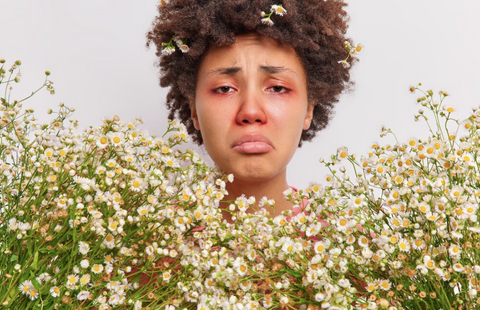
Itching in The Throat or Ears
Throat or ear itching is a bothersome feeling where there's a constant urge to scratch or rub the affected area. Throat or ear itching is caused by different things like allergies, irritants, infections, or underlying medical issues. Throat itching comes with a tickling or scratchy sensation. Ear itching feels irritating deep inside the ear canal. Throat itching is linked to conditions like allergic rhinitis, postnasal drip, or respiratory infections. This causes throat clearing, coughing, or discomfort when swallowing. Ear itching is a sign of conditions such as otitis externa (swimmer's ear), allergies, earwax buildup, or an early sign of an ear infection. Along with the itching, there is pain, discharge, or changes in hearing.
Itching in the throat or ears is a common symptom of ragweed allergy because of how the immune system reacts to the allergen. Ragweed pollen has proteins that start an allergic reaction in people who are sensitive to it. When someone with a ragweed allergy comes into contact with ragweed pollen, the immune system sees these proteins as foreign intruders and starts a series of immune reactions.
Histamines are important chemicals in allergic reactions. They are released by immune cells when they detect allergens like ragweed pollen. Histamines make blood vessels widen and become more porous, which helps immune cells get to the area they think is under attack. The response is a central part of allergic reactions.
In ragweed allergy, histamines are a big part of throat and ear itching. When ragweed pollen gets inhaled or touches the mucous membranes in the throat or ears, it makes histamines in those areas. Histamines cause blood vessels in the throat and ear tissues to widen, which leads to more blood flow and tissue swelling. This swelling is what causes the uncomfortable feeling of itching.
Throat itching (pharyngitis) usually comes with a scratchy or tickling feeling in the back of the throat. Throat itching is annoying and makes people cough or clear their throat to try and ease the irritation. Ear itching is very uncomfortable too, and some people try to relieve it by putting things like fingers or cotton swabs into their ears. This must be avoided because it leads to injury or infection.
It's important to remember that itching in the throat or ears is just one of many symptoms of ragweed allergy. Other common symptoms include sneezing, a runny or stuffy nose, itchy or watery eyes, and even headaches, as mentioned earlier. These symptoms vary in intensity and happen during ragweed pollen season.
Dealing with ragweed allergy symptoms, including throat and ear itching, often involves using antihistamines and other allergy medicines. Antihistamines work by stopping the effects of histamines, which helps lessen the allergic response and ease symptoms like itching. However, for people with severe allergies, it's important to talk to a healthcare provider to figure out the most effective treatment plan. This must include prescription medicines or allergen immunotherapy (allergy shots).
Sneezing
Sneezing is when air is suddenly and strongly pushed out from the nose and mouth, often making a distinct sound. It happens automatically when something irritates or stimulates the nasal passages or the lining of the nose. Sneezing helps the respiratory system protect itself by expelling things like dust, allergens, or foreign particles that enter the nose. It's a common bodily function triggered by allergies, infections, or exposure to strong smells or irritants. When a person sneezes, various muscles tighten, the diaphragm contracts, and a burst of air is expelled, sometimes with a quick closing of the eyes as a protective reflex.
Sneezing is a common sign of ragweed allergy because of the immune system reaction to ragweed pollen. Ragweed plants release small pollen grains into the air, and when people with ragweed allergies breathe in these pollen particles, their immune system identifies them as foreign and harmful. This recognition sets off a chain of reactions in the body, which results in the release of histamines and other chemicals. Histamines are crucial in the body's immune system reaction. They widen blood vessels, leading to more blood flow in the affected areas and causing inflammation. While this immune reaction aims to shield the body from harmful substances, in allergies like ragweed allergy, it often leads to unwanted symptoms.
Histamines mainly affect the mucous membranes in the nose and throat. When these membranes come into contact with ragweed pollen, histamines make them swollen and irritated. This irritation prompts the body's natural defence response to get rid of the irritant, leading to sneezing.
Sneezing is a reflex that's meant to forcefully push irritants out of the nose and upper respiratory tract. It happens with a sudden and strong exhale of air, which pushes out mucus, allergens, and other irritants from the nose and throat. This quick push of air is called a sneeze. Histamines make the nasal passages produce more mucus. This extra mucus is the body's way of trying to catch and get rid of the allergen. But it results in a runny or blocked nose, adding to the feeling of needing to sneeze.
Sneezing is usually joined by other allergy signs like a runny or itchy nose, watery eyes, and congestion. These signs together are what people commonly call "hay fever" or allergic rhinitis. Although sneezing isn't harmful, the frequent and ongoing sneezing linked with ragweed allergy is uncomfortable and interrupts daily activities. To manage sneezing and other symptoms of ragweed allergy, antihistamine medicines are commonly used to counteract the effects of histamines in the body.
Runny or Stuffy Nose
A runny nose, medically known as rhinorrhea, or a stuffy nose (nasal congestion) are common symptoms of different respiratory issues. Runny nose occurs when there is an excessive production of nasal secretions or a sense of blockage in the nasal passages. The cause is irritation, inflammation, or infection of the nasal mucous membranes. It is due to allergies, colds, sinusitis, or exposure to irritants like dust or pollen. A runny nose is when clear or mucus-like fluid comes out of the nostrils. A stuffy nose is when the nasal passages feel blocked or obstructed. This makes it hard to breathe through the nose. Both cause discomfort, sneezing, and a decreased sense of smell.
A runny or stuffy nose is a common symptom of ragweed allergy due to the way the immune system reacts to the presence of ragweed pollen. Ragweed plants release tiny pollen particles into the air as part of their reproductive process. When people with ragweed allergies encounter these particles, their immune systems view them as foreign intruders. This sets off an allergic response, marked by the release of chemicals, especially histamines, into the bloodstream. Though histamines play a vital role in the body's defence against allergens, in the context of allergies, they cause discomforting symptoms.
Histamines play a major role in the body's immune response. They make blood vessels in affected areas, such as the nasal passages and sinuses, more permeable. This increased permeability allows fluid to leak from the bloodstream into the surrounding tissues. In a runny nose, histamines make the blood vessels in the nasal lining widen and become more permeable. This leads to the leakage of fluid into the nasal passages, causing the characteristic runny nose associated with ragweed allergy. This leads to the leakage of fluid into the nasal passages, resulting in the characteristic runny nose associated with ragweed allergy. Histamines have various effects on blood vessels, and sometimes they cause constriction instead of dilation.
In the nasal passages, histamines lead to the narrowing of blood vessels, causing nasal congestion or a stuffy nose. This combination of increased fluid production and narrowed nasal passages make breathing through the nose difficult, leading to a feeling of congestion or blockage. When combined with increased fluid production, this makes breathing through the nose difficult and creates a sensation of congestion or blockage. This dual effect of histamines contributes to the symptoms of both a runny and stuffy nose in individuals with ragweed allergy.
The severity of runny or stuffy nose symptoms due to ragweed allergy differ from person to person. Some people feel a bit uncomfortable, while others have stronger symptoms that affect their daily routines. To manage these symptoms, individuals often use antihistamines and nasal corticosteroids, which are bought over the counter or prescribed by a doctor. These medications assist in reducing the body's histamine response, thus easing the nasal congestion and runniness associated with ragweed allergy.
It's crucial to remember that although a runny or stuffy nose is a frequent symptom of ragweed allergy, other allergens like dust mites, pet dander, and mould spores induce similar nasal symptoms in individuals with allergies. Consulting a healthcare provider for a proper diagnosis and management assists individuals in identifying the specific allergen causing their symptoms and creating an effective treatment strategy.
Difficulty Sleeping
Difficulty sleeping, which is called insomnia. It happens when a person has ongoing problems with falling asleep, staying asleep, or getting enough restful sleep. This leads to feeling tired during the day, having trouble concentrating, mood changes, and an overall decrease in quality of life. Difficulty sleeping is due to different things like stress, anxiety, health issues, medicines, lifestyle, and surroundings, and it ranges from being occasional to long-lasting.
Difficulty sleeping is one of the signs of ragweed allergy. It usually happens because of the body's response to ragweed pollen. Ragweed pollen is a strong allergen that causes inflammation in the nose and sinuses. This inflammation leads to a stuffy nose. making it hard to breathe through the nose. So, people end up breathing through their mouth, which is uncomfortable and disturbs their sleep. The extra mucus produced as part of the allergic reaction causes a sensation of mucus dripping down the throat, leading to throat irritation and nighttime coughing, which disrupt sleep.
People with ragweed allergies have several other symptoms like sneezing, itching, and watery eyes, which make their sleep problems worse. Constant sneezing and itching are especially bothersome at night, stopping people from falling asleep or waking them up often during the night. The discomfort from these symptoms make it difficult to get good sleep, leading to tiredness and a decrease in overall well-being.
Ragweed plants release pollen in late summer and early autumn, which coincides with a time when many people like to keep their windows open for cooler air. But this means they're exposed to more ragweed pollen, which comes into their homes and disturbs their sleep. Closing windows and using air purifiers might lessen indoor pollen levels and enhance the quality of sleep.
Ragweed allergy symptoms cause discomfort and stress, which interfere with sleep. Anxiety about symptoms like sneezing or itching at night create a cycle of sleep problems. Chronic sleep issues affect daily life, leading to daytime fatigue, lower productivity, and mood changes.
To sleep better with ragweed allergy, consider these steps. Firstly, consult a healthcare provider for suitable allergy medications like antihistamines or nasal corticosteroids to manage symptoms. They offer relief and improve sleep. Follow good sleeping habits, like sticking to a regular sleep routine, creating a comfy sleep space, and avoiding caffeine and heavy meals before bed. Using allergen-resistant bedding covers and keeping windows closed during high pollen times lower allergen exposure and support better sleep.
Itchy or Watery Eyes
Itchy or watery eyes mean the eyes feel uncomfortable or irritated, usually with too many tears or a feeling of itching. Itchy or watery eyes occur due to allergens like pollen, dust, or pet dander, infections, environmental factors such as smoke or pollutants, or medical conditions like conjunctivitis (pink eye) or dry eye syndrome.
Itchy or watery eyes are typical signs of ragweed allergy because of the immune system reaction to ragweed pollen. When someone with a ragweed allergy comes into contact with ragweed pollen, their immune system perceives it as a threat and initiates an allergic reaction.
Histamine is a key player in this response. Histamine is a chemical released by the immune system to combat what it believes is a threat. One of its effects is increasing the permeability of blood vessels in the eyes. This increased leakage lets fluids, like tears, escape from the blood vessels and into the surrounding tissues. Because of this, the eyes get irritated and start producing too many tears, causing the characteristic watery eyes of ragweed allergy. The itching in the eyes is a direct result of histamine, as it causes discomfort and itching in the sensitive eye tissues.
The body's response to ragweed pollen causes inflammation in the conjunctiva, the clear tissue covering the white part of the eye and lining the inner eyelids.This inflammation is called allergic conjunctivitis. It causes redness, itching, and a feeling of grittiness in the eyes.
It's important to remember that the intensity of these eye symptoms differ from person to person and rely on an individual's sensitivity to ragweed pollen. Some individuals experience only slight discomfort, while others have more intense and disruptive symptoms. Managing these symptoms usually involves using over-the-counter or prescribed antihistamine eye drops, avoiding contact with allergens, and seeking advice from a healthcare provider for more severe cases.
Skin rash or hives (less common)
Skin rash, or hives, is when the skin suddenly has raised, red, itchy, and sometimes swollen areas. These areas are called wheals or welts, and they are in different sizes and shapes and appear anywhere on the body. Hives usually happen because of the body's reaction to allergens, irritants, medicines, or other triggers. This condition is usually short-term and goes away on its own in a few hours to days, but sometimes it lasts longer and needs medical attention. Hives often come with itching and discomfort, and they are mild or severe.
Skin rash or hives, although less common than other symptoms, happen due to a ragweed allergy. This allergy is mainly caused by the body's response to ragweed pollen, which leads to the release of histamines and other chemicals. While the main symptoms of a ragweed allergy usually involve the respiratory system, like sneezing, nasal congestion, and itchy or watery eyes, these immune reactions impact the skin, resulting in the appearance of skin rashes or hives.
When someone with a ragweed allergy encounters ragweed pollen, their immune system sees it as a danger and reacts strongly. This leads to the release of histamines from mast cells, which are responsible for common allergy symptoms. Histamines impact the skin, resulting in inflammation and itchiness.
Hives are called urticaria, and are one of the skin reactions. They are raised, red or pink welts that are itchy and vary in size and shape. These hives usually appear suddenly and come and go within hours or days. When histamines are released due to ragweed pollen exposure, it leads to more blood flow in the skin and fluid leakage from blood vessels, causing these distinctive welts and itching.
Another skin reaction linked with ragweed allergy is a rash. It appears as red, itchy, and sometimes swollen patches on the skin. This rash must show up on any part of the body that has had contact with the allergen or more widespread. Like hives, these rashes occur due to the immune system's reaction to exposure to ragweed pollen.
Not everyone with a ragweed allergy has skin reactions like hives or rashes. Allergies show up differently in people. Some mainly have breathing issues, while others experience skin problems due to the allergy. The intensity of skin reactions differ, from mild itching and redness to more severe and uncomfortable symptoms.
To deal with skin rashes or hives from a ragweed allergy, it's important to tackle the root cause - the allergy itself. This involves using antihistamines or other allergy medicines to lessen the body's histamine reaction and ease itching and swelling. Steering clear of direct contact with ragweed pollen, like staying inside during high pollen times or wearing protective clothing, is helpful in preventing skin reactions.
How do Ragweed Allergy symptoms typically progress over time?
Symptoms of ragweed allergy show a clear pattern, tracking the stages of the ragweed plant's life. At first, people did not realise they're sensitive to ragweed pollen. The signs are subtle and seem like a mild cold or seasonal discomfort. These initial signs include occasional sneezing, a slightly runny or itchy nose, and some watery eyes. As the ragweed season goes on, especially in late summer and early autumn, the symptoms get stronger. More frequent sneezing, worse congestion, and thicker, longer-lasting nasal discharge happen. Besides these nose symptoms, individuals have a scratchy or itchy throat, coughing, and sometimes even mild fatigue or irritability from disrupted sleep. In serious cases, especially with prolonged exposure or high sensitivity, ragweed allergies cause broader reactions like headaches, worsening asthma, or making existing conditions like eczema worse. As time passes, these symptoms usually ease when the ragweed season ends. But for many with allergies, this cycle happens every year, showing how ragweed allergies are chronic and cyclical.
Studies that observe allergy symptoms and pollen levels throughout a ragweed season provide evidence for this pattern. Pollen levels go up as ragweed plants grow and release more pollen, closely linked to increased allergy symptoms in those sensitive to ragweed. The long-term research has shown that repeated exposure to allergens like ragweed pollen lead to more serious symptoms and greater sensitivity over time. This is why people with ragweed allergies often notice their symptoms getting worse as they get older. The clinical studies have recorded the effectiveness of different treatments, like antihistamines and immunotherapy, in easing and even stopping the progression of ragweed allergy symptoms. These treatments work by adjusting the immune response to ragweed pollen, lessening the seriousness and duration of symptoms, and potentially stopping them from getting worse over time.
How does Ragweed Allergy symptoms change?
Symptoms of ragweed allergy change with seasons. Ragweed releases pollen mainly in late summer and early autumn, typically from August to October. When temperature falls and daylight decreases, ragweed plants spread their tiny pollen grains. This surge of pollen in the season causes various symptoms in people with allergies.
At the start of ragweed season, many people get subtle symptoms like sneezing, stuffy nose, and a bit of throat irritation. These early signs are confused with a common cold because they are occasional and not severe. But as weeks go on and ragweed pollen levels rise, the symptoms get stronger. Eyes turn red and itchy, and a constant cough starts. For some people, this increasing exposure to ragweed pollen results in severe allergic rhinitis or hay fever. This means lots of sneezing, a runny or blocked nose, and feeling very tired from disrupted sleep.
Symptoms change from mild to severe, linked to the amount of ragweed pollen in the air. As the season goes on, the pollen levels rise, giving allergy sufferers longer and stronger exposure. Therefore, symptoms happen nearly every day during the peak of ragweed season. They usually get better when the first frost comes and kills the ragweed plants. This pattern is a key sign of ragweed allergies. It's important for sensitive individuals to check pollen forecasts and take proper steps in late summer and early autumn to handle their symptoms well.
Can Ragweed Allergy cause chest pain or tightness?
Yes, ragweed allergy leads to chest pain or tightness, but it's not common. It usually happens indirectly because of the body's reaction to allergens. When a person with a ragweed allergy encounters ragweed pollen, their immune system responds with an allergy. This leads to the release of histamines and other substances that create inflammation, causing symptoms like sneezing, a blocked nose, and itchy eyes.
In severe or unmanaged cases, this allergic reaction brings about breathing problems such as wheezing, coughing, and feeling out of breath. When the allergic reaction affects the airways and bronchial passages, it causes chest discomfort or tightness. This feeling happens because the airways get narrower, making it harder to breathe and causing chest discomfort. It's crucial to remember that this chest feeling usually happens as a result of ragweed allergy, and it's more linked to asthma or a worsening of allergic asthma rather than directly caused by the ragweed allergen itself.
Asthma is a long-term breathing condition marked by swollen airways. For people sensitive to both ragweed pollen and having asthma, ragweed pollen makes asthma symptoms worse. When exposed to ragweed pollen, the airways get even more swollen and narrow, causing signs like wheezing, coughing, and sometimes chest tightness or pain. Allergic asthma is a kind of asthma set off by things like pollen, dust mites, or pet fur. Ragweed pollen is one of these things and it makes allergic asthma worse. In people with allergic asthma, the body's reaction to ragweed pollen makes more mucus and narrow the airways, making the chest feel tight or uncomfortable.
Does Ragweed Allergy typically cause a fever?
No, ragweed allergies typically do not cause a fever. Allergies, including ragweed allergies, happen when the immune system reacts to things like pollen, dust mites, or pet fur. This reaction mainly involves releasing histamines and other chemicals that cause symptoms like sneezing, a runny nose, itchy eyes, and congestion. But allergies generally don't raise the body's temperature, which is a main sign of fever.
Fever often indicates an infection or the body's response to an illness. It happens when the immune system raises the internal temperature to fight off harmful things like bacteria or viruses. Allergic reactions, including to ragweed pollen, don't come from an infection, so fever isn't a usual symptom.
Allergies don't cause fever, but some people with allergies get more respiratory infections because their airways are inflamed. If someone with allergies gets a respiratory infection, they have a fever because of the infection. However, this fever is not connected to their allergies.
How long do Ragweed Allergy symptoms typically last?
Ragweed allergy symptoms go on as long as the ragweed pollen season, which changes depending on location. In many places, the ragweed pollen season usually goes from late summer to early autumn, about from August to October. So, ragweed allergy signs last for a few weeks to a couple of months at this time.
The duration of ragweed allergy symptoms changes from person to person and from year to year, depending on things like how sensitive someone is to ragweed pollen and the local weather. Usually, when the ragweed season is at its busiest, which is when there's the most pollen around, symptoms are strongest and go on for a few weeks.
Some people start having symptoms when they first notice ragweed pollen in the air, and these symptoms keep going until the first frost comes and gets rid of the ragweed plants and stops the pollen. In some places, this is only a few weeks, but in areas with a longer ragweed season, symptoms last much longer.
Ragweed allergy symptoms don't happen all the time during the season. They are stronger on some days and lighter on others, based on how much pollen there is and how sensitive someone is. individuals do things to handle their symptoms, like staying inside during times when there's a lot of pollen, using allergy medicines, and considering allergy shots if a healthcare provider suggests it. This makes symptoms better and makes life better overall during ragweed season.
How does Ragweed Allergy diagnosed?
Doctors use a mix of medical history, physical check-up, and specific tests to diagnose a ragweed allergy. If someone shows symptoms like sneezing, a runny or blocked nose, itchy or watery eyes, and throat irritation in late summer and early autumn, the healthcare provider usually begins by asking a lot of questions about their medical history. They want to know when the symptoms happen and what causes them, like being around ragweed pollen.
Ragweed allergy diagnosis uses a few steps, including patient history, a physical check-up, and specific allergy tests. This way, they really figure out what's going on and help manage the symptoms and relieve the allergy. After going over the medical history, the next important step is doing allergy tests. There are mainly two ways to test for a ragweed allergy: skin prick tests and blood tests. In a skin prick test, they put a tiny bit of things a person allergic to, like ragweed pollen, on their skin. If a person is allergic, they get a small, raised bump and itchiness where they did the test in about 15-20 minutes. Blood tests, like the specific Immunoglobulin E (IgE) test, check how much of the special antibodies for certain allergens, including ragweed, are in the blood. If IgE levels are high because of ragweed pollen, it shows an allergic reaction.
These tests check if there's a ragweed allergy and how serious it is. After a diagnosis, healthcare providers plan with patients to make personal ways to deal with the allergy. This includes things to avoid what they're allergic to and, if needed, medicine, either from a doctor or from a store, to help with symptoms during ragweed season.
Does GP Consultation enough to diagnose Ragweed Allergy?
A GP consultation alone is generally not enough to definitively diagnose a ragweed allergy. Healthcare providers need to examine medical history, conduct a physical check-up, and perform specific tests to diagnose a ragweed allergy.
In a GP consultation, the doctor inquires about medical history, focusing on symptoms like sneezing, a runny nose, itchy eyes, or skin rashes, particularly during specific times of the year or in specific locations. This information is crucial for gaining an understanding, but it isn't sufficient for a definite diagnosis.
When a GP checks out, they find things like a stuffed-up nose, red or swollen eyes, or skin reactions. These signs show there's an allergy, but they don't prove it's ragweed for sure.
To be really sure about a ragweed allergy, a person needs specific tests. The best ones are skin prick tests (SPT) or blood tests, like the specific IgE test for ragweed allergens. In an SPT, they put a little bit of allergen stuff, like ragweed pollen, on skin and see what happens. If the skin reacts, it's a good sign of an allergy. If specific IgE levels for ragweed are high in the blood, it's a strong sign of an allergy.
Sometimes, they need other tests like a nasal endoscopy or allergen challenge tests to understand more about how bad the allergy is and how it affects the breathing system.
The American Academy of Allergy, Asthma & Immunology (AAAAI) and the European Academy of Allergy and Clinical Immunology (EAACI) emphasise the significance of employing specific tests to confirm a ragweed allergy. These guidelines stress the need for tests to make a clear diagnosis and tell allergies apart from other things that look similar.
Do Medical Professionals conduct Health Tests to diagnose Ragweed Allergy?
Yes, medical professionals conduct specific health tests to diagnose Ragweed Allergy. The skin prick test is a key method for diagnosing Ragweed allergy. In this test, a small amount of Ragweed allergen extract is placed on the skin, usually on the forearm or back, and then the skin is cracked or scratched. If the person has a Ragweed allergy, they get a raised, itchy bump where the allergen was applied. Trained medical experts, often allergists or immunologists, carry out this test to give clear proof of the allergy.
Medical professionals perform blood tests, like specific IgE testing for Ragweed allergens, as a diagnostic approach. These tests gauge the levels of particular IgE antibodies in the blood in reaction to Ragweed allergens. Increased IgE levels specific to Ragweed signify an allergic reaction, and healthcare providers assess the results.
The healthcare providers perform nasal or bronchial challenge tests. In these tests, a small amount of Ragweed allergen is introduced into the nasal passages or airways under controlled conditions. The patient's reaction is carefully observed to diagnose and assess the allergy's severity.
Allergists or immunologists, conduct a comprehensive clinical assessment. They examine detailed medical history and perform a thorough physical examination to evaluate symptoms and pinpoint triggers. This assessment is crucial alongside specific diagnostic tests to verify Ragweed allergy.
Diagnosing Ragweed allergy follows medical standards and guidelines set by organisations like the American Academy of Allergy, Asthma & Immunology (AAAAI) and the European Academy of Allergy and Clinical Immunology (EAACI). These guidelines stress the significance of diagnostic tests carried out by medical professionals for accurate confirmation of allergic conditions. This is important for making sure the diagnosis is correct and for directing the right treatment and management plans for those who are affected.
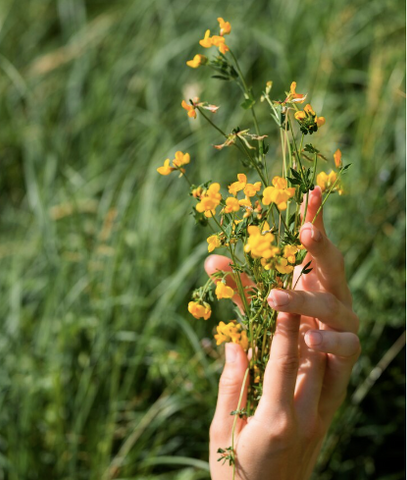
What are some common treatments for Ragweed Allergy?
Ragweed allergy, also called hay fever or allergic rhinitis due to ragweed pollen, bothers many people. There are usual treatments and strategies to handle these symptoms. Here are some common treatments and their short explanations:
Immunotherapy: For severe ragweed allergies, allergists administer allergy shots. This is a prolonged treatment where regular injections of allergen extracts are given to desensitise the immune system to ragweed pollen. Eye Drops: To soothe itchy, red, and watery eyes from ragweed allergy, over-the-counter or prescribed eye drops are used. Commonly used eye drops include Ketotifen (Zaditor), olopatadine (Patanol), and artificial tears. Antihistamines: To counteract the effects of histamine, a chemical released during allergies, antihistamine medications are used. Loratadine (Claritin), cetirizine (Zyrtec), and fexofenadine (Allegra) are common over-the-counter options. Decongestants: To temporarily ease nasal congestion, there are medications that narrow blood vessels in the nasal passages. Common decongestants like Pseudoephedrine (Sudafed) and phenylephrine come in different forms. Avoidance: To reduce contact with ragweed pollen, some strategies include keeping windows shut in peak pollen seasons and using air purifiers. It's good to avoid outdoor activities on days with high pollen counts and to take a shower after being outside. Saline Nasal Rinse: Using a saline solution to wash the nasal passages and clear away pollen, which helps to reduce congestion. For this, use sprays like neti pots or saline nasal. Nasal Corticosteroids: Nasal corticosteroids, available with or without prescription, diminish inflammation in the nasal passages. Some examples are Fluticasone (Flonase), budesonide (Rhinocort), and mometasone (Nasonex).
Consulting a healthcare provider or allergist is crucial to find the right treatment plan for individual ragweed allergy symptoms. They customise a treatment approach that fits requirements and suggest a mix of these treatments for the best relief.
Immunotherapy
Immunotherapy is a medical treatment that works to strengthen or control the body's immune system. It works in battling diseases, especially those linked to abnormal immune responses. It's commonly applied in treating allergies and specific autoimmune conditions. The goal of immunotherapy is to reduce the sensitivity of the immune system to specific allergens or antigens, such as pollen or venom. This is done by gradually exposing the individual to increasing amounts of the allergen. This exposure assists the immune system in becoming more tolerant and less reactive to the allergen, leading to a reduction in the severity of allergic reactions.
Immunotherapy for ragweed allergy includes giving small, increasing doses of ragweed allergen extracts to the allergic person. This happens over several months to years. These treatments, known as allergen-specific immunotherapy or allergy shots, start after identifying the specific allergen causing the reactions. This is done through skin tests or blood tests following the diagnosis of ragweed allergy.
For immunotherapy treatment, allergen extracts made from ragweed pollen are employed. These extracts hold proteins that initiate the allergic response. The treatment begins with very small amounts of the allergen extract. It's usually given through injections (subcutaneous immunotherapy) or tablets placed under the tongue (sublingual immunotherapy). These initial doses are not likely to provoke notable allergic reactions.
As time passes, the doses are slowly raised at regular intervals, typically weekly or every few weeks. The aim is to reach a maintenance dose that effectively desensitises the immune system without causing severe allergic symptoms. With increasing doses, the immune system becomes less responsive to the ragweed allergens. This lessens the severity of allergic symptoms when the person comes into contact with ragweed pollen in the environment.
Immunotherapy's effectiveness in ragweed allergy differs for each individual. It has been proven to notably lessen the intensity of symptoms such as sneezing, runny nose, itchy eyes, and congestion. These effects endure for several years even after treatment ends. In certain cases, immunotherapy stops the emergence of new allergies and halt the advancement from allergic rhinitis to asthma.
The reaction to immunotherapy differs from person to person. Some find significant relief from symptoms, but others only see partial improvement. The treatment's effectiveness relies on the patient's dedication to the regular schedule, which lasts for several years. It's important for trained healthcare professionals to administer immunotherapy due to the potential risk of allergic reactions during treatment.
Eye Drops
Eye drops, also called ophthalmic or ocular drops, are liquid medications meant for direct application into the eyes. They are frequently used to address a range of eye issues like allergies, dryness, redness, itching, and infections. Eye drops are available in different types and contain diverse active ingredients based on their intended use.
Eye drops for ragweed allergy typically have antihistamines or mast cell stabilisers as their active components. Ragweed pollen is a common allergen that provokes allergic reactions, causing symptoms such as itchy, watery eyes, redness, and swelling.
These medications hinder the effect of histamines, which are chemicals the body releases in response to allergens like ragweed pollen. By blocking histamines, antihistamine eye drops alleviate symptoms like itching and redness in the eyes. Mast cells release histamines when exposed to allergens. Mast cell stabiliser eye drops prevent mast cells from releasing histamines, reducing the allergic response in the eyes.
The effectiveness of eye drops in treating ragweed allergy symptoms vary for each person. The effectiveness of eye drops in treating ragweed allergy symptoms depends on factors like the severity of the allergy, the specific formulation of the eye drop, and individual sensitivity to the active ingredients. Typically, eye drops provide relief from common symptoms of ragweed allergy, like itching, redness, and watering of the eyes.
But it's crucial to note that while eye drops are effective for eye-related symptoms, they don't address other allergy symptoms such as sneezing, nasal congestion, or throat irritation. These require different treatments. These require different treatments like oral antihistamines or nasal sprays. For the best outcome, individuals with ragweed allergies must consult an allergist or healthcare provider. They recommend the most suitable eye drops and an overall allergy management plan tailored to their specific needs.
Antihistamines
Antihistamines are medicines used to relieve allergy symptoms, including those caused by ragweed allergies. Antihistamines work by blocking the effects of histamine, a chemical released by the body due to allergens. Histamine is responsible for common allergy symptoms like itching, sneezing, a runny nose, and watery eyes.
In the presence of ragweed pollen, a person with a ragweed allergy triggers their immune system, which releases histamine. Antihistamines step in by attaching to histamine receptors, stopping histamine from causing its usual effects. This process reduces or removes allergy symptoms, giving relief to those affected by ragweed allergies.
The effectiveness of antihistamines differ for each person, but many with mild to moderate allergies find relief. In severe cases or when antihistamines don't provide sufficient relief, a healthcare provider suggests alternative treatments like immunotherapy or prescription medications to effectively manage ragweed allergy symptoms.
Decongestants
Decongestants are medicines often used to ease nasal congestion, a common symptom in various allergic conditions like ragweed allergies. They function by narrowing the blood vessels in the nasal passages, which lessens swelling and congestion. This narrowing enables better airflow, relieving the sensation of stuffiness. This helps individuals with allergies breathe more comfortably.
In the case of ragweed allergies, decongestants offer relief from the congestion linked to this particular allergen. It's crucial to understand that decongestants don't tackle the root cause of the allergy, which is the body's immune reaction to ragweed pollen. They simply ease symptoms by temporarily reducing congestion. Consequently, their effectiveness in ragweed allergies is confined to symptom relief, and they don't offer a complete solution to the allergy itself.
To comprehensively manage ragweed allergies, people often blend decongestants with antihistamines or other allergy medicines. Antihistamines hinder the impact of histamine, which is released in an allergic reaction, and alleviate additional allergy symptoms like itching and sneezing. In severe cases, allergists suggest allergen immunotherapy (allergy shots) to gradually desensitise the immune system to ragweed pollen, providing a longer-term solution to ragweed allergies.
Avoidance
Avoidance in allergies means taking steps to reduce contact with allergens like pollen, to minimise allergic reactions. For ragweed allergy, avoiding strategies aim to limit exposure to ragweed pollen, a common trigger for seasonal allergies. This includes actions like staying indoors on days with high pollen levels, keeping windows shut, using air purifiers, and refraining from outdoor activities during peak pollen periods.
Avoiding ragweed allergy works by lessening the intake of ragweed pollen. Ragweed pollen comes out in late summer and early fall. If someone with this allergy breathes it in or touches it, they get symptoms like sneezing, runny nose, itchy eyes, and congestion. By following avoidance steps, these individuals lower their contact with ragweed pollen, reducing the chances and intensity of allergic reactions.
Avoidance's effectiveness for managing ragweed allergy changes for each person. While it helps lessen symptoms, it might not give full relief, especially for those with severe allergies or in places with lots of ragweed pollen. Doctors often suggest allergy medicines like antihistamines and nasal corticosteroids along with avoidance steps to handle symptoms better. Avoidance's success relies on how well someone sticks to these steps and how sensitive they are to ragweed pollen. Consulting with an allergist assists in making a personalised allergy plan with avoidance and the right medicines for the best outcome.
Saline Nasal Rinse
Using a saline nasal rinse, sometimes called nasal irrigation or nasal douching. It is a simple and natural method to cleanse and soothe the nasal passages with a saline solution. Saline Nasal Rinse involves flushing a sterile saline solution through one nostril, allowing it to flow through the nasal passages, and then out the other nostril. This helps remove mucus, allergens, and irritants from the nasal passages, providing relief from congestion, nasal discomfort, and sneezing.
Regarding ragweed allergy, saline nasal rinses bring benefits. Ragweed often causes allergic rhinitis, resulting in issues like a runny or blocked nose, sneezing, and itchy or watery eyes. Saline nasal rinses operate by washing away ragweed pollen and other allergens in the nasal passages. The saline solution moisturises the nasal lining, lessens swelling, and comforts irritated tissues. While it doesn't treat the allergy itself, it eases the uncomfortable symptoms linked to ragweed contact.
Saline nasal rinses' effectiveness for handling the ragweed allergy symptoms differ for each person. Some find regular use brings notable relief from congestion and nasal discomfort. Remember, these rinses mainly treat symptoms and don't tackle the allergy's main cause. They're often used along with other allergy management methods like antihistamines or avoiding allergens for more complete relief. Generally, saline nasal rinses are a helpful, drug-free part of managing ragweed allergy symptoms. However, how well they work depends on personal factors and how severe the allergy is. It's wise to consult a healthcare expert for tailored advice on handling ragweed allergy.
Nasal Corticosteroids
Nasal corticosteroids, given with nasal sprays, are common medicines for treating allergic rhinitis, including allergies to ragweed pollen. Nasal corticosteroids hold corticosteroid compounds that work to lessen inflammation and allergic responses in the nasal passages.
For ragweed allergy, nasal corticosteroids function by calming down the immune response provoked by ragweed pollen exposure. For someone with this allergy, when they inhale pollen, their immune system views it as a danger and lets out chemicals like histamine. This leads to symptoms like sneezing, nasal congestion, itching, and a runny nose. Nasal corticosteroids operate by blocking this inflammatory reaction, decreasing the production of inflammatory substances and immune cells, which eases allergy symptoms.
Nasal corticosteroids' effectiveness for managing ragweed allergies differ for each person, but when used correctly, they're generally highly effective. These medicines offer significant relief from nasal congestion, sneezing, and other allergy symptoms. For many, they're the first choice due to their ability to target the underlying inflammation. However, how well they work depends on factors like how severe the allergy is, sticking to the treatment plan, and other allergy triggers. It's crucial to consult a healthcare provider for a proper diagnosis and a tailored treatment plan, which involves nasal corticosteroids along with other allergy management methods.
What are some natural remedies for Ragweed Allergy symptoms?
Natural approaches aid conventional treatments for ragweed allergy symptoms. A list of some helpful remedies includes:
- Saline Nasal Irrigation: Using a saline solution to rinse nasal passages helps clear pollen and mucus, decreasing congestion and irritation.
- Honey: Eating locally sourced honey desensitises the body to local pollen, but there's limited scientific evidence.
- Quercetin: Quercetin, a natural antihistamine found in foods like apples, onions, and berries, help lessen allergy symptoms.
- Butterbur: The herbal supplement with potential antihistamine and anti-inflammatory properties must be used cautiously and under medical supervision because of potential side effects.
- Probiotics: Studies indicate that probiotics assist in regulating the immune response and diminishing allergy symptoms.
- Bromelain: The enzyme found in pineapple, which has anti-inflammatory properties, potentially assists with nasal congestion..
- Local Pollen Counts: Monitor local pollen counts and aim to stay indoors during high levels, usually in the morning and on windy days.
- Avoidance Measures: To lower exposure to ragweed pollen, keep windows shut, use air purifiers with HEPA filters, and avoid outdoor activities in the peak pollen season.
- Steam Inhalation: Breathing in steam from hot water briefly eases nasal congestion and calms irritated nasal passages.
- Vitamin C: The antioxidant, by acting as a natural antihistamine, aids in reducing allergy symptoms.
- Turmeric: Curcumin, the active compound in turmeric, has anti-inflammatory properties and offers relief from allergy symptoms.
- Local Raw Fruits and Vegetables: Eating locally grown fruits and vegetables help the body adapt to local allergens.
- Acupuncture: Acupuncture is found to be helpful by some in reducing allergy symptoms, although scientific evidence is mixed.
- Eyewashes: For itchy or irritated eyes due to allergies, using saline eyewashes offer relief.
- Relaxation Techniques: Practising relaxation techniques such as yoga, meditation, or deep breathing help because stress worsen allergy symptoms.
It's crucial to consult a healthcare professional before trying any new treatment, especially for severe allergies. Natural remedies are helpful in addition to allergy management, but they must not replace prescribed medications when needed. Keep in mind that individual responses differ.
How to prevent Ragweed Allergy?
To prevent ragweed allergies, reduce exposure to ragweed pollen. Know the peak season in the region, usually in late summer and early fall. Follow local pollen forecasts. If high levels are expected, stay indoors. Keep windows and doors shut to keep pollen out. Air purifiers with HEPA filters help remove pollen indoors.
Maintaining good personal hygiene prevents ragweed allergies. After being outside on high pollen days, shower and change clothes to remove pollen from skin and clothing. This reduces allergens in living spaces.
For those with a ragweed allergy, it's best to restrict outdoor activities in peak pollen season. If anyone needs to go outside, choose times with lower pollen levels, like after rain. Wear a wide-brimmed hat and sunglasses to protect the face from pollen.
For severe ragweed allergies, consult an allergist. They suggest over-the-counter or prescription allergy medications like antihistamines or nasal corticosteroids to manage symptoms. Allergen immunotherapy, or allergy shots, are recommended to desensitise the immune system to ragweed pollen. To prevent ragweed allergies, use a combination of awareness, avoidance measures, personal hygiene, and, if needed, medical intervention. These steps help lessen exposure to ragweed pollen and reduce discomfort from this common seasonal allergy.
Can you purchase Ragweed Allergy medication in an Online Pharmacy?
Yes, you can purchase ragweed allergy medication from an online pharmacy. Online pharmacies provide a convenient way to buy various medications, including those for ragweed allergies. Legitimate ones operate legally and mandate prescriptions for prescription-only allergy medicines. They offer both over-the-counter (OTC) and prescription choices, making it simpler for individuals to get the required treatment for their allergies.
When buying allergy medicine online, verify it's a legitimate and licensed online pharmacy. Choose those that need a valid prescription for prescription drugs and follow regulations for online medicine sales. Consult a healthcare professional or allergist before starting allergy treatment to confirm the right medication and dosage.
Can OTC antihistamines treat Ragweed Allergy and side effects?
Yes, over-the-counter (OTC) antihistamines address Ragweed Allergy and are useful for handling allergy symptoms. But over-the-counter (OTC) antihistamines have some side effects. OTC antihistamines effectively treat Ragweed Allergy. They block histamines, chemicals released by the body in response to allergens like ragweed pollen. Histamines trigger familiar allergy signs like sneezing, runny nose, itchy or watery eyes, and throat or nose itching. OTC antihistamines like cetirizine (Zyrtec), loratadine (Claritin), and fexofenadine (Allegra) are readily available at most pharmacies and provide relief from these symptoms.
Antihistamines, while usually safe and effective, bring about side effects for some people. Common OTC antihistamine side effects include drowsiness, dry mouth, dizziness, and headaches. The degree and seriousness of these side effects differ among various antihistamine drugs and individuals. Newer-generation antihistamines like loratadine and fexofenadine tend to cause less drowsiness compared to older ones like diphenhydramine (Benadryl).
When selecting the right OTC antihistamine for Ragweed Allergy, take into account personal tolerance for side effects. If a person has concerns or specific medical conditions, then they must consult a healthcare professional. Follow the dosing instructions on the product label and do not surpass the recommended dose. If symptoms are severe or not effectively managed with OTC antihistamines, it's advisable to seek further assessment and advice from an allergist or healthcare provider. They recommend more advanced allergy management, which involve prescription medications or allergen immunotherapy.
What are some common misconceptions about Ragweed Allergy?
Ragweed allergy is a widespread allergic reaction to pollen from the ragweed plant, found commonly in North America. There are a number of mistaken beliefs about ragweed allergy. It's important to correct them for a clearer understanding of the condition and how to deal with it. These are some common misconceptions:
- Ragweed allergy only occurs in the fall: Ragweed pollen is most plentiful in late summer and early autumn, but it starts as early as late July and persists until the first frost. In some cases, people have symptoms earlier in summer or even during milder winters, depending on their location.
- Ragweed allergy is the same for everyone: Symptoms of ragweed allergy vary. Some people have mild symptoms, while others face severe allergic reactions. The kind and intensity of symptoms depend on factors such as genetics, how much they're exposed, and personal sensitivities..
- Ragweed pollen is only found in rural areas: Ragweed plants grow in both rural and urban places. They flourish in cities and the countryside alike. The wind carries their pollen over long distances, meaning even those in urban areas might come into contact with it.
- Ragweed allergy is a short-term condition: Ragweed allergy is usually seasonal, but for many, it lasts for weeks or even months during the pollen season. Some with ragweed allergy have allergies year-round to other things like dust mites or pet dander.
- Ragweed allergy is easy to diagnose on your own: Deciding on allergies, like ragweed allergy, by yourself leads to confusion. Allergy symptoms are similar to other issues, and allergens are complicated. To get the right diagnosis and treatment, it's best to talk to an allergist. They conduct allergy tests and offer personalised advice.
- Over-the-counter allergy medications are always sufficient: Over-the-counter allergy medicines help with mild to moderate ragweed allergy symptoms. However, some people need prescribed medications like antihistamines, nasal corticosteroids, or allergy shots (immunotherapy) for better and longer-lasting control.
- Ragweed pollen avoidance is easy:It's hard to avoid ragweed pollen completely as it's common in many places. Anyone does things like keeping windows closed, using air purifiers, and showering after outdoor time to lower exposure. But full avoidance is usually not required.
- Ragweed allergies are not serious: Ragweed allergies bring a lot of discomfort and disrupt daily life. They even set off asthma symptoms or make existing breathing problems worse for some people. It's vital to treat ragweed allergies seriously and get the right medical help if necessary.
- Ragweed allergy is the same as food allergies: Ragweed allergy is about the pollen from ragweed plants and doesn't mix with typical food allergies. But some with ragweed allergy have oral allergy syndrome. This leads to mild itching in the mouth and throat when eating certain raw fruits and vegetables. It happens because of shared proteins in these foods.
- Ragweed allergy goes away with age: Allergies change or become milder, but there's no assurance that ragweed allergy vanishes with age. Some people still have symptoms for life, while others see their allergies getting better as time goes on.
Does Ragweed Allergy Cause Asthma?
Yes, ragweed allergies cause asthma. Ragweed pollen is a strong allergen, triggering allergic reactions in sensitive individuals, resulting in respiratory symptoms. While not everyone with a ragweed allergy develop asthma, there's a known connection between ragweed allergy and worsening asthma symptoms in those who already have asthma.
Studies and clinical observations show a connection. Ragweed pollen has proteins that stimulate allergies in the respiratory system. When a person with a ragweed allergy breathes in this pollen, their immune system might react strongly. This leads to the release of chemicals like histamine, causing inflammation and narrowing of airways. These actions bring about or worsen asthma symptoms, including wheezing, breathlessness, and coughing.
Research indicates that people with allergic rhinitis, commonly triggered by ragweed allergy, face a higher risk of developing asthma. This highlights the strong link between ragweed allergy and asthma. The allergic reaction in the airways sometimes evolves into full-fledged asthma.
Not everyone with a ragweed allergy gets asthma. However, there's a definite and supported link between ragweed allergy and worsening asthma in people who already have it. That's why it's very important for those with ragweed allergies, especially if they have asthma, to control their allergy symptoms well. This helps reduce the chances of asthma getting worse.









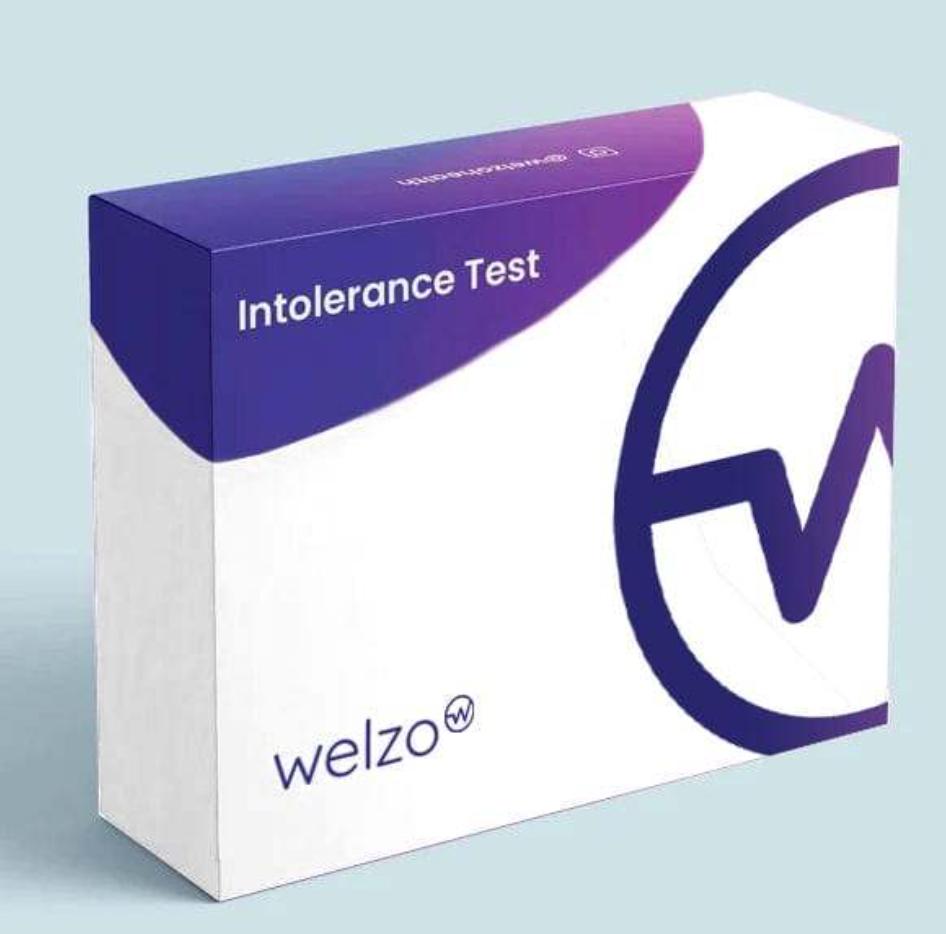










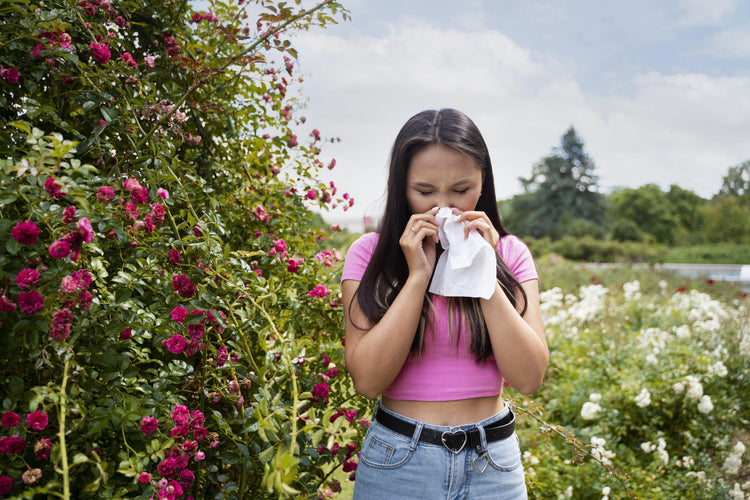


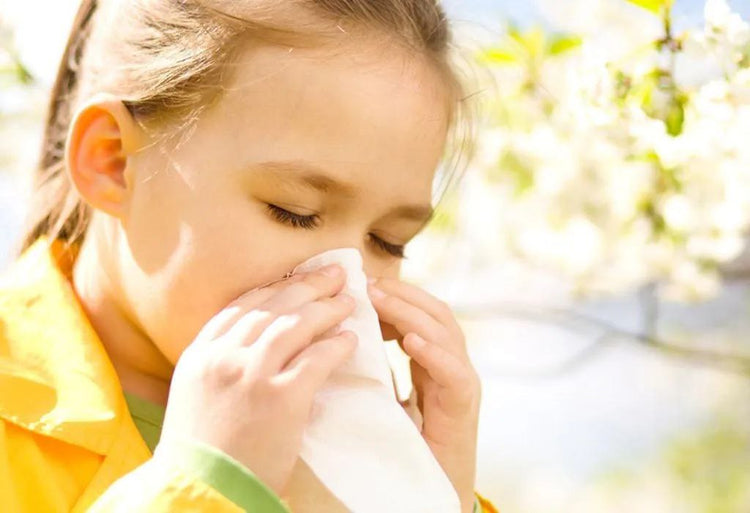


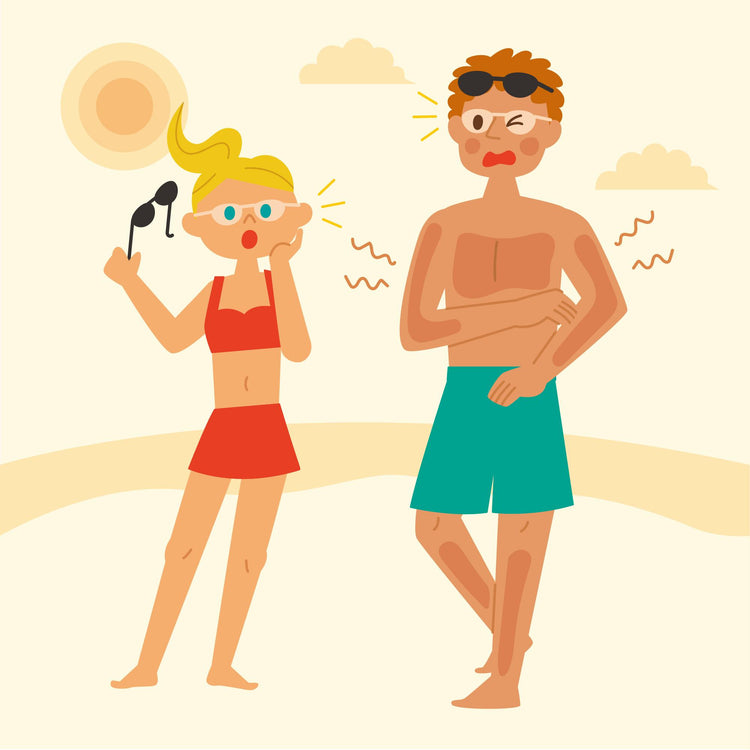

 Rated Excellent by 26,523+ Reviews
Rated Excellent by 26,523+ Reviews